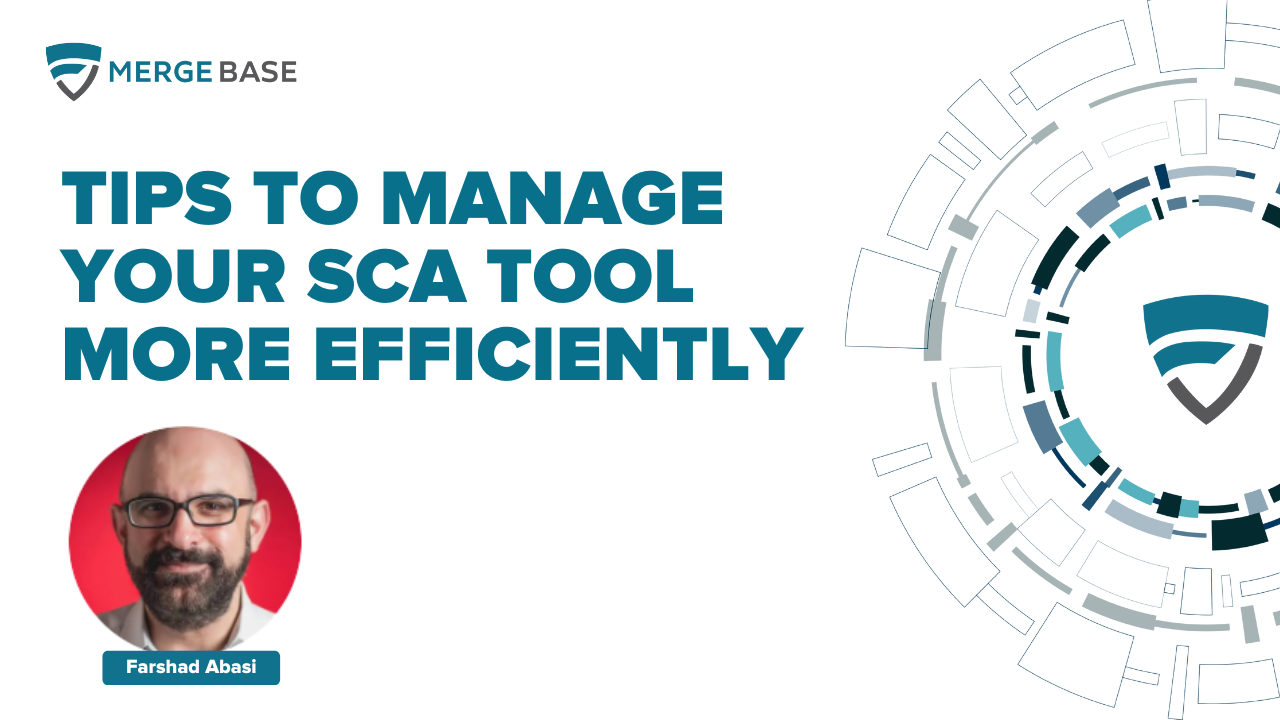As software developers, we can’t afford to overlook security vulnerabilities in our programs. However, managing security issues can be a time-consuming task, and sometimes, we just don’t have the bandwidth to deal with it. That’s why some developers turn off their software composition analysis (SCA) tools, leaving themselves open to potential exploits. But it doesn’t have to be that way.
By following Farshad Abasi’s tips and tricks exclusively mentioned in this video, we can streamline our SCA processes, reducing the amount of time we spend on managing false positives and increasing our overall software security. With a little effort and a lot of confidence, we can keep our code safe and secure from attackers.
Here are Tips to Manage It More Efficiently
Beyond the tips & tricks Farshad Abasi talks about in the video, here is a SCA Best Practices guide.
As the best practices for software development become more robust, developers have started relying more on software composition analysis (SCA) tools to ensure that their code is free from vulnerabilities. However, managing these tools can become a cumbersome task, especially when the number of projects a developer has to handle increases. As a result, many developers opt to turn off their SCA tool, exposing them to software security vulnerabilities. But is it worth the risk?
In this blog post, we’ll share some tips and tricks on how software developers can save time and manage their SCA tool more efficiently while also increasing their software security.
Automate your SCA tool:
Many developers turn off their SCA tool because they don’t have the time to manually analyze the code output. However, automating your SCA tool makes it easier to run scans without taking up too much of your time. Automating your scans can help you catch any vulnerabilities that may have been overlooked manually. Take time to schedule when the scans should be run and set up email alerts for when vulnerabilities are identified.
Understand and customize your SCA tool:
A good SCA tool should be able to provide enough information on how it works and what parameters to adjust. Developers should familiarize themselves with their SCA tool and adjust it to fit their needs. For example, some tools may have default settings that could lead to high false positive rates or may scan irrelevant code dependencies. Understanding the tool and customizing settings that work for you can lead to better scan results and fewer false positives.
Prioritize vulnerabilities:
The tool’s report can often include a long list of vulnerabilities, which can be overwhelming. By prioritizing the vulnerabilities that are critical, developers can focus on fixing the most severe issues first. This step can help developers manage their time more efficiently, impacting the bottom line by identifying the most critical vulnerabilities before addressing the others.
Have a vulnerability management plan:
Though an SCA tool can find vulnerabilities, it is up to the developer to address them. A good vulnerability management plan can help. The developer needs to have a plan in place to ensure that after scanning vulnerabilities, they are given the appropriate priority/ category for fixing and that the fixes are implemented correctly. The plan should also include a system of monitoring in place to determine if vulnerabilities are recurring or if there was an oversight that needs correction.
Choose the right SCA tool:
Lastly, choosing the right SCA tool can save plenty of time and money. The right tool should be adjustable in terms of problem severity configuration, have proper reporting available for trending, and offer useful visualizations of project dependencies. Understanding the capability of the tool you have chosen to invest in is essential. A tool that fits seamlessly in your development pipeline and project requirements can be more beneficial than a tool that covers all possible cases of vulnerabilities but is impossible to manage.
Software architecture analysis tools are crucial in identifying and preventing software security vulnerabilities. The risk of an exploitable vulnerability in code is too high to ignore. However, the management of SCA tools can be cumbersome, especially when juggling multiple projects amid balancing deadlines and budgets. It’s essential to take the necessary steps to manage the tool effectively. We hope these tips and tricks can help developers spend less time managing the tool and have fewer false positives, leading to more time to focus on critical vulnerabilities and increasing the project’s overall software security.
Farshad gives a free consultation.

